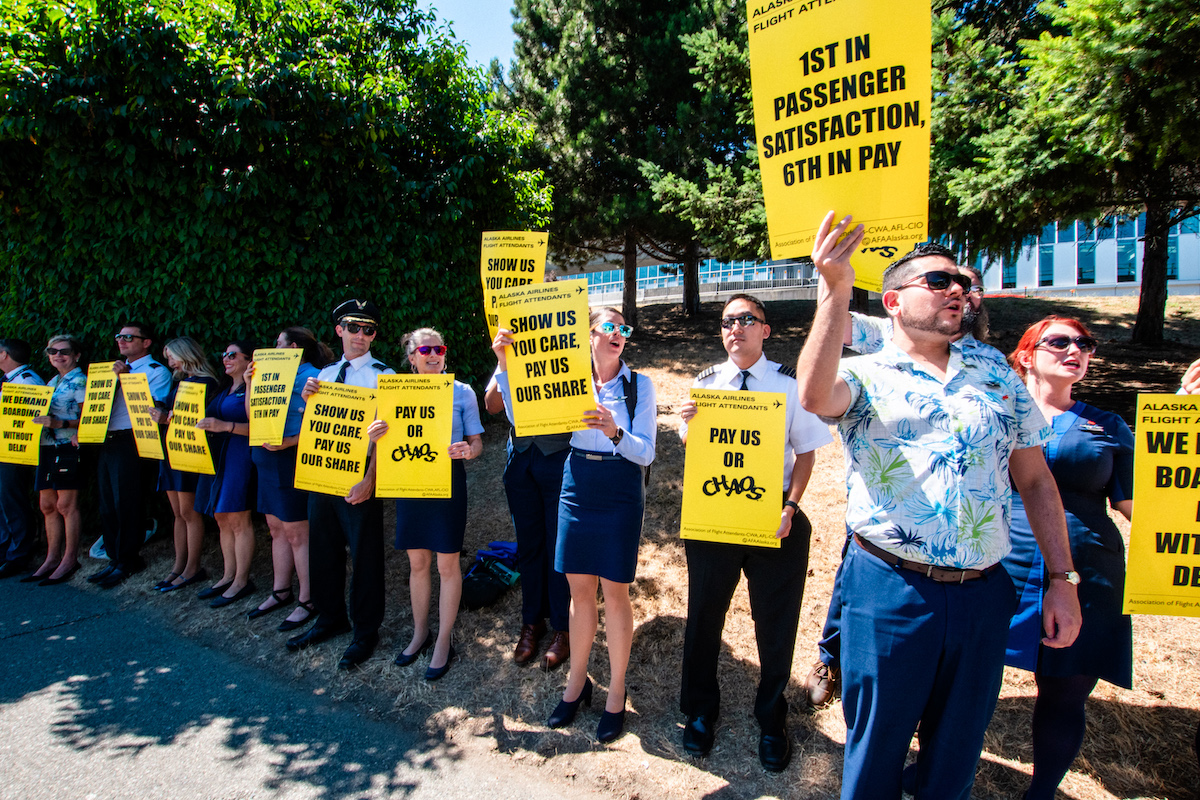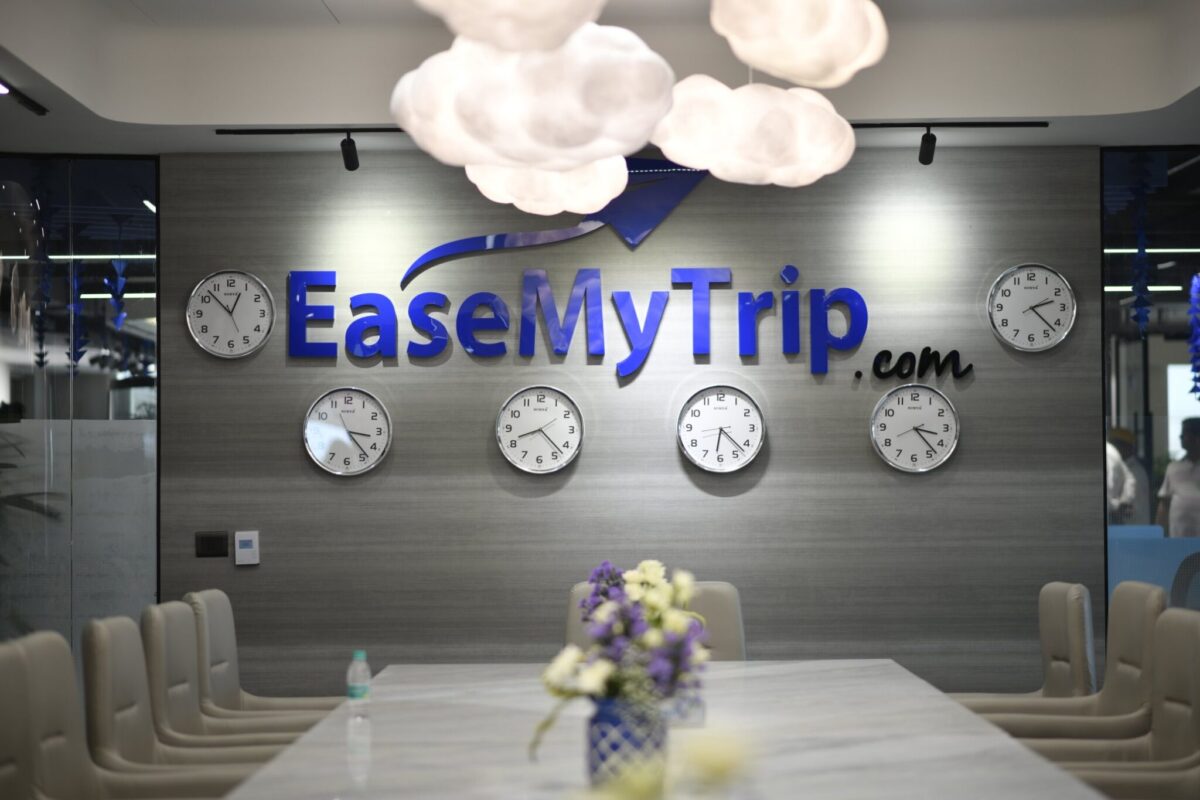Flight Attendants Want More from U.S. Airlines. It Might Take a Strike to Get There.

Skift Take
Flight attendants at Southwest Airlines overwhelmingly rejected a new contract over the weekend. The move is the latest in the mounting tensions between cabin crew and U.S. airline management that could result in the industry’s first labor action in more than a decade.
The agreement that Southwest’s nearly 19,000 flight attendants rejected included pay increases of 36% over five years and other quality of life improvements. The offer clearly was not enough: 64% of those who voted rejected the agreement.
“The flight attendants of Southwest Airlines have made it clear that this proposed contract is not going to heal the hurt,” said Lyn Montgomery, president of the Transport Workers Union Local 556 that represents the crew members. “We will go back to the table to achieve the collective bargaining agreement that meets the needs of the hardest-working flight attendants in the industry.”
The union declined to comment further.
One area of disagreement concerns boarding pay. Almost all U.S. flight attendants are paid only when an aircraft door is closed, rather than during the boarding and deplaning process. Delta Air Lines is the sole U.S. carrier that pays cabin crew for boarding, a policy it added last year amid a drive to unionize (the airline’s cabin crew is currently not unionized).
Cabin crew unions at Alaska Airlines, American Airlines, Spirit Airlines, and United Airlines are all in active contract negotiations. American flight attendants have gone as far as to authorize a potential strike.
‘Furious’ Cabin Crews
Labor is having a moment in the U.S. Strikes have been successful in a number of high profile industries from the big auto manufacturers to actors and screenwriters in Hollywood. And the threat of strikes helped freight railroad employees reach long-sought deals. Organizing campaigns have succeeded at historically non-union companies like Starbucks.
“People, they’re furious,” said Sara Nelson, president of the largest flight attendants union, the Association of Flight Attendants. “They’re furious that they haven’t been recognized, and their demands are very high.”
Flight attendants were on the frontlines of the pandemic. That included dealing with a surge in unruly fliers and having to enforce controversial rules like the mask mandate.
In addition to the ground pay issue, another issue concerns the work rules that govern when flights are delayed and canceled, said Embry-Riddle Professor Blaise Waguespack. This was top of mind for many Southwest crews following the airline’s meltdown last December when it “lost” many of its pilots and flight attendants.
Some airline executives have received big pay increases as their carriers have returned to profitability post-Covid. And pilots across the industry — even among historically lower-cost regional airlines — have ratified contracts with historic pay levels.
“It’s a busy season for labor relations,” Waguespack said.
American Airlines Crews Could Strike
“Flight attendants across the industry are tired of waiting,” said Julie Hedrick, president of the Association of Professional Flight Attendants, which represents crews at American, in a September virtual town hall.
That is especially true of flight attendants at American. Their contract became amendable in January 2019 and cabin crew have not received a pay raise since then, Hedrick said.
The flat pay has come even as inflation has driven prices 18% higher than in 2019.
Strikes at airlines are governed by the U.S. Railway Labor Act. The law lays out strict rules: mediated talks, a strike authorization vote, followed by a release from mediation, and finally a 30-day so-called cooling off period before a strike can begin. There are typically several months between each step. And then, the president can still intervene and stop a strike.
The more than 23,000 flight attendants at American authorized a strike in August, and then sought a release from mediated talks in November. The request was denied by the National Mediation Board.
If flight attendants at American did strike — a big if — it would be the first at a U.S. airline since pilots at Spirit Airlines struck in June 2010. The scale of such an action at American, however, would be several orders of magnitude greater: Spirit flew less than 1% of all U.S. domestic flights in 2010 whereas American flies nearly 23% today, according to Cirium Diio data.
One needs to go back to 2005 to find the last time staff at a major airline went on strike – that’s when mechanics at Northwest Airlines walked off the job.
Even a “CHAOS,” or Create Havoc Around Our System, strike that only targets a few flights could be very disruptive. Neither the airline nor passengers know what flights will be affected in a CHAOS action until it happens, which could leave planes full of passengers stranded at the gate without crews.
The Association of Professional Flight Attendants asked American for a 35% pay increase at the date of signing and annual increases thereafter, while American offered just an 11% increase at signing, Hedrick said in September. The union declined to comment on the current status of negotiations.
“There’s no way we’re getting the flight attendant contracts done across the industry without a credible strike threat,” Nelson said when asked if she thought a strike is needed to achieve the gains flight attendants seek. “One of the airlines is going to have to face that, [and] the rest are going to have to know that’s coming.”
Another Cost Concern for Airlines
Inflation hit every airline during the pandemic. During the first nine months of the year, unit costs excluding fuel — a measure of how much it costs an airline to fly a seat one mile — were up 15-23% at American, Delta, and United compared to 2019. And that was after they largely eased the run up in expenses after double-digit increases last year.
“We are facing sizable [cost] headwinds with labor and [the] expectation of a new flight attendant agreement” next year, United Chief Financial Officer Michael Leskinen said in October.
That sentiment was shared by his counterparts at Alaska and American, who have all mentioned the potential for labor cost headwinds to Wall Street analysts in recent months.
Melius Research analyst Conor Cunningham estimates that a 20% pay increase for flight attendants would cost U.S. airlines roughly $1.9 billion annually, and increase industry unit costs excluding fuel by 1.3%. Add in the boarding pay sought by flight attendants, and expenses would jump another $718 million and unit costs another 0.5%. Southwest would face the largest increases among U.S. airlines.
“Cost pressures continue to mount in the U.S. airline industry,” Cunningham wrote Monday. “Airlines have slowly been revising down January and February schedules to better match supply with demand in hopes of regaining pricing power … [But] the reduction in supply will further highlight the core cost issues.”
Southwest is alone among U.S. airlines as having factored a potential new flight attendant contract into its financial outlook.




